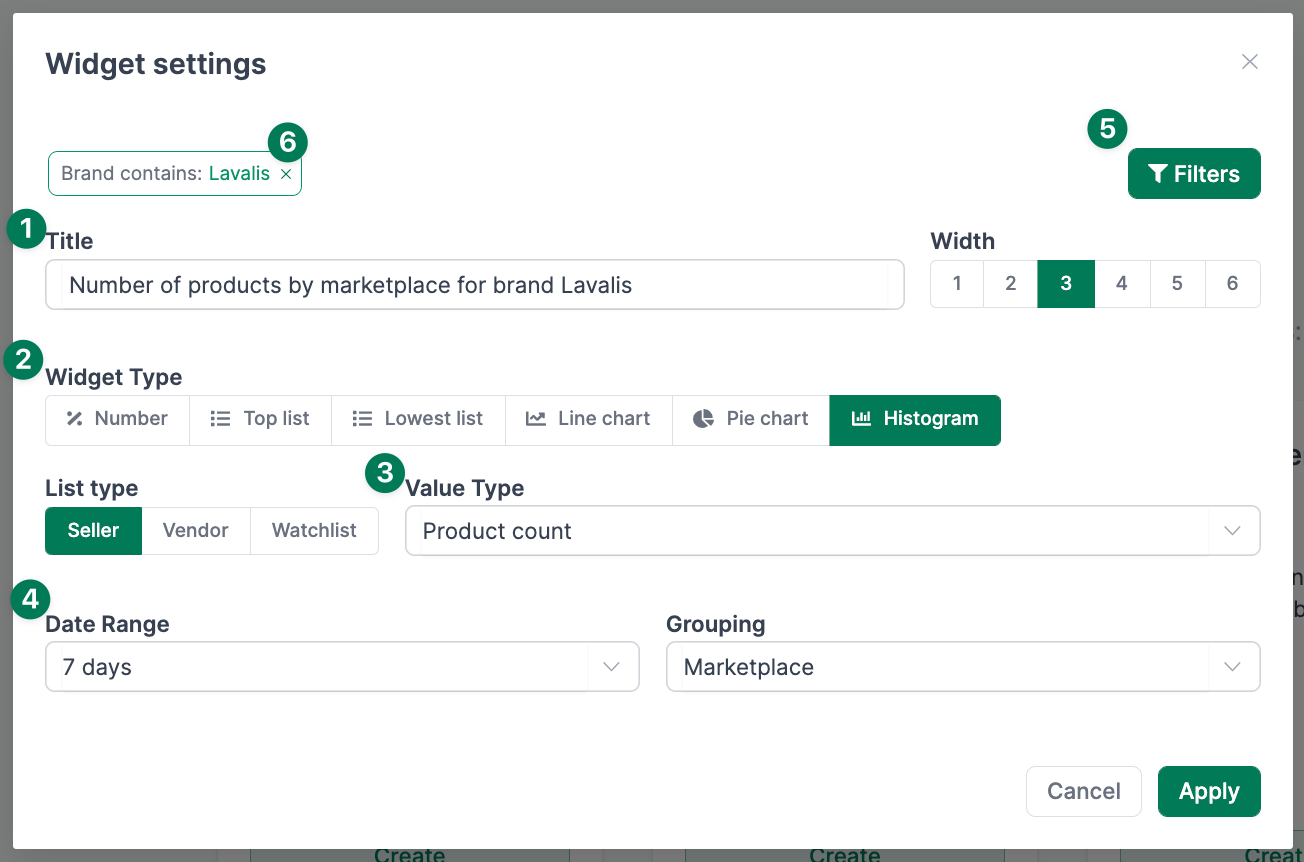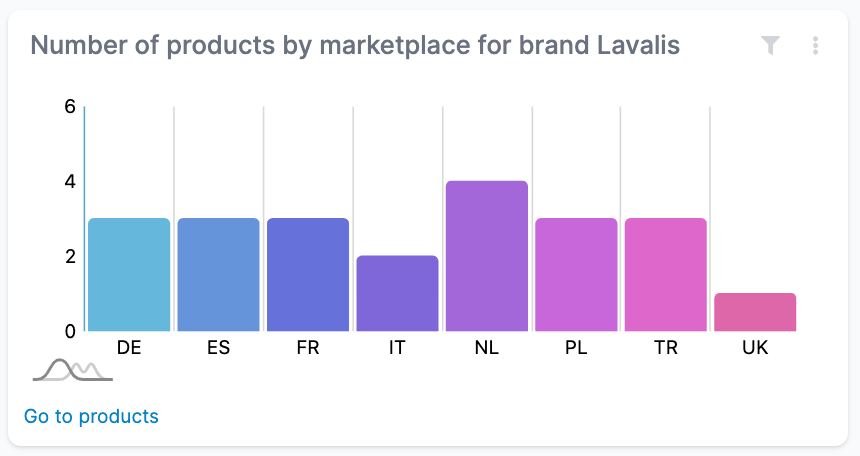Amazon Dashboards (customized)
Overview Key Figures

The Standard Dashboard page presents selected key figures for seller and vendor accounts. On this page, you have the option to create dashboards with metrics that are particularly relevant to you.
Create Custom Dashboards
To create a new dashboard, click the "Add New" button in the upper right corner of the "Custom Dashboards" page and specify a title.
Now you have the option to select a template or add widgets individually.

Various widgets are directly added to the dashboard if you select a template. You can delete individual devices from the template anytime and add additional widgets manually.
To add widgets manually, click on "Add widget" in the upper right corner, and the following window will open:

- Assign a title.
- Select how you want the widget to look.
- Under "Value type," select which KPI you want to display.
- Under "Date range," specify either a comparison period or duration.
- Use filters to make the widgets even more targeted. For example, this allows you to identify the number of products by the marketplace for a particular brand. The filters used are displayed above the title (6).
Afterward, you get, e.g., the following result:

You can see how many products the Lavalis brand offers per marketplace.
Click on "Go to products" at the bottom left to get a product list of the brand.
Another example would be that you want to view a brand's sales on a specific marketplace over time. For this, the widget settings could look like this:

You can edit all widgets at any time by clicking on the three dots in the tile and then on "Edit".
It is helpful to create multiple dashboards. Thus, on one dashboard, you check metrics on sales; on another, metrics on customer reviews, etc.
Filter Options
With the filter, you can create more detailed widgets. You can filter for everything that the product list makes possible for you.
